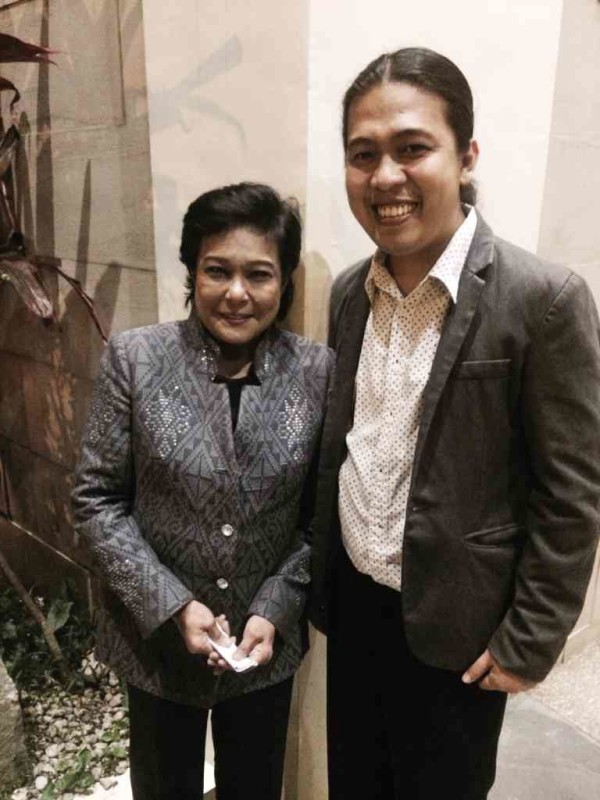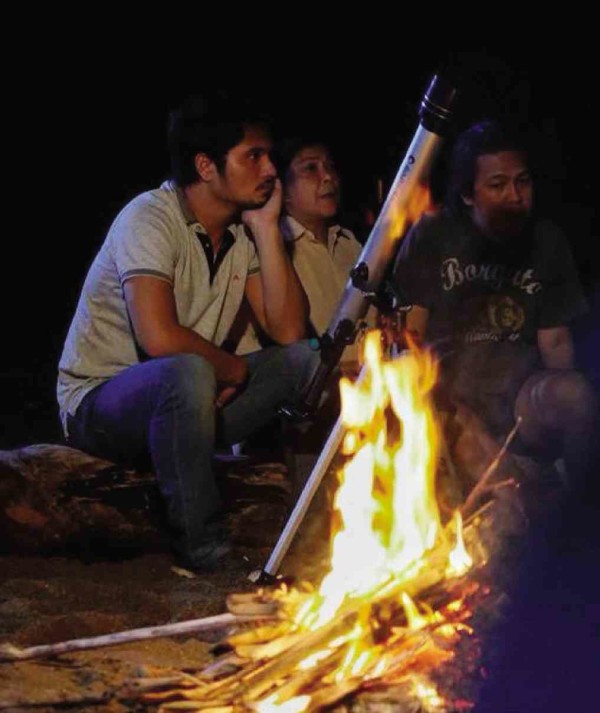Bicol icons and ‘imahens,’ revisited
There is unmistakable pride in filmmaker Kristian Sendon Cordero’s voice as he shows Manila visitors little-known cultural and religious treasures of the Bicol region.
If Naga’s beloved patroness is known as Inang Peñafrancia, residents call the three life-size imahens of the dead Jesus Christ, Amang Hinulid, the young director, a former seminarian, explains.
Believed to be miraculous, these venerated antique figures are housed in a nondescript chapel, in Barangay Cagbunga, Gainza, in the outskirts of the city, sandwiched between verdant rice fields and a bustling basketball court.
Cordero vividly recalls the various legends surrounding Amang Hinulid—that the figures were fished out of the river, that only one of the three imahens could be paraded around during Holy Week. “The other two images would be too heavy, and only one could be carried out of the chapel for the annual procession.”
“Hinulid” is also the title of his new film—an entry in the QCinema Film Festival—and the latest starrer of Nora Aunor.
Article continues after this advertisementLike many other Filipino Catholics, Bicolanos are “intimately connected” to the image of the dead Christ. Cordero says, “We have an affinity for the underdog, the fallen hero, but at the same time, this veneration comes with a certain optimism.”
Article continues after this advertisementThe Bikolano word hinulid refers to the act of placing a baby in a duyan (cradle), he says. “Although the mother is resting or is busy with chores, she remains vigilant, keeping watch over the baby,” says Cordero who teaches at Ateneo de Naga, as well.
For Bicolanos, Amang Hinulid “is not dead, but just waiting to be awakened… Isn’t this a very folk way of understanding the doctrine of Resurrection?”
“Hinulid” is the second part of a planned trilogy, which began with Cordero’s debut film, the 2013 Cinema One entry, “Angustia.” The third film will be titled “Salvacion,” he says.
His grandmother Nanay Idad, a folk healer and licensed midwife, introduced these Bicolano icons to him. “I used to accompany Nanay Idad in her annual pilgrimages to Angustia, Hinulid and Salvacion.”
Angustia, Hinulid and Salvacion are three popular religious icons in the region, he volunteers. “As a kid, I visited these sacred sites: Inorogan in Iriga for Angustia; Calabanga for Hinulid; and Tiwi and Tandaay for Salvacion. I grew up listening to these stories that seem to require retelling.”
“Hinulid,” also serves as tribute to Carlos Ojeda Aureus, Naga-born writer and retired professor of the University of the Philippines.
“I was inspired by his short story about a mother and her dead son,” he says. “His powerful stories made me see Naga with a new perspective.”
In his second film, the grieving mother is an overseas Filipino worker, to be played by Aunor, who returns to Bicol after her son is killed—“either by fraternity officers or military men.”
Her son’s death makes the woman “question her faith and sense of morality.” ”We have so many tragic stories on OFWs,” Cordero clarifies. “Nora is no stranger to their plight. She portrayed Flor Contemplacion in a movie and acted in the play, ‘DH.’”
The film, which will premiere in October, had just wrapped up its 10-day shoot.
Cordero is currently raising funds for its postproduction. Possible donors can check out the film’s Facebook page or e-mail [email protected] for details.
Cordero considers this film Aunor’s “grand homecoming” in the Bicol region. After learning Ilokano in Mes de Guzman’s “Ang Kwento ni Mabuti,” Aunor will speak Rinconada Bikol and Bikol-Sentral onscreen for the first time.
“I didn’t forget my dialect and speak it if I meet fellow Irigeños,” Aunor relates.
Cordero, who also penned the script, relates that Aunor delivered her Rinconada lines flawlessly and mostly in one take.
Like Aunor, Cordero hails from Iriga City, which is 42 minutes away from Naga. Costar Jess Mendoza says his mother is from Legazpi City.
Some scenes were shot at the Iriga train station, where the young Aunor sold iced water to commuters, before superstardom beckoned.
Indeed, Aunor is a Bicolano icon, too.
“Nora is Bikol. She has always been identified as one of us,” the director says.
Like “Angustia,” “Hinulid” is his modest attempt to popularize the use of his native tongue on film.
“As a writer living in the Bicol region, I have come to believe in the power of our own languages,” he points out.
“We hope to advance Bikol as a language of cinema. This is a daunting task, but proceed we must.” With a report from Juan Escandor Jr., Inquirer Southern Luzon

